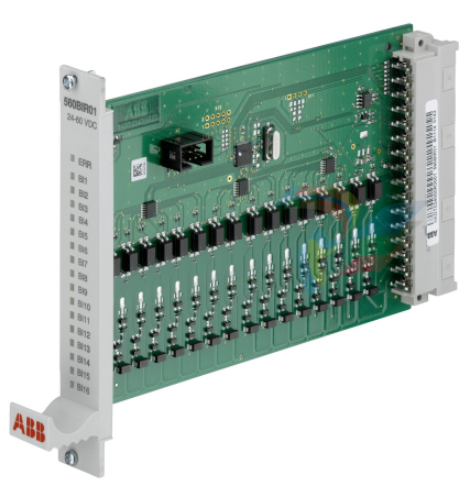This module is a high-performance binary input module under the ABB brand, which is the core signal acquisition component in industrial automation control systems. It is mainly used to convert discrete switch signals (such as equipment start stop status, valve switch position, limit signal, etc.) on site into digital signals that can be recognized by the control system, achieving real-time monitoring of the operating status of on-site equipment.
ABB 500PB101 1MRB178009R0001 1MRB200064/C Binary Input Module
Basic information of module
This module is a high-performance binary input module under the ABB brand, which is the core signal acquisition component in industrial automation control systems. It is mainly used to convert discrete switch signals (such as equipment start stop status, valve switch position, limit signal, etc.) on site into digital signals that can be recognized by the control system, achieving real-time monitoring of the operating status of on-site equipment.
Module Model
500PB101
ABB module core model, representing product series and functional types
Order number 1
1MRB178009R0001
Module exclusive ordering identifier for precise procurement and inventory management
Order number 2
1MRB200064/C
Supplement order identification, which may correspond to specific versions or configurations
Module Type
Binary input module (DI module)
Only receives discrete switch signals and does not have output function
Core functions and features
2.1 Signal acquisition capability
The module has multi-channel signal acquisition function (specific number of channels should refer to the detailed technical manual), and each channel can independently monitor one binary signal. It supports common signal types such as "on/off" and "high/low level", and is suitable for various mechanical switches, proximity switches, photoelectric sensors and other signal sources on site.
2.2 Anti interference performance
In response to the complex electromagnetic environment of industrial sites, the module adopts multiple anti-interference designs and has strong electromagnetic compatibility (EMC). By using isolation techniques such as optoelectronic isolation, the electrical isolation between signal channels and system buses can be achieved, effectively suppressing common mode interference and differential mode interference, ensuring the stability and accuracy of signal acquisition, and adapting to harsh industrial scenarios such as metallurgy, chemical engineering, and power.
2.3 Diagnosis and Monitoring
The fully integrated self diagnostic function of the module can monitor its own working status (such as power failure, communication abnormality) and channel signal status (such as line short circuit, open circuit) in real time. The diagnostic information is transmitted to the control system through the bus, making it easy for operation and maintenance personnel to quickly locate faults and reduce maintenance costs. Some versions support channel fault alarm output function, further improving system reliability.
2.4 Compatibility and Scalability
This module is a supporting component of ABB's specific automation system series (such as AC 500 series PLC), perfectly compatible with system buses (such as PROFINET, EtherNet/IP, Modbus, etc., specific bus types need to be confirmed), supports hot plugging function (some models), and can complete module installation and replacement during system operation without affecting overall system operation, improving system scalability and flexibility.
Main technical parameters
Power parameters
Working power supply voltage
DC 24V (common industrial grade power supply)
input signal
Input signal type
PNP/NPN type, dry/wet contact (configurable)
input signal
Input voltage range
High level: DC 11-30V; Low level: DC 0-5V
input signal
response time
1ms-10ms (configurable through software)
isolation performance
isolation voltage
≥ 500V AC (between signal and bus)
environmental parameters
Working temperature range
-20 ℃~60 ℃ (conventional); -40 ℃~70 ℃ (wide temperature version)
environmental parameters
relative humidity
5%~95% (no condensation)
mechanical parameters
Installation method
DIN rail installation
Application scenarios
This module is widely used in various industrial automation control fields, with typical scenarios including:
-Power industry: monitoring of substation equipment status, collection of switch status of transmission and distribution lines;
-Chemical industry: monitoring of reactor valve switch status, collection of pipeline pressure switch signals;
-Manufacturing industry: monitoring the start stop status of production line equipment, collecting conveyor limit signals, and receiving quality inspection sensor signals;
-Metallurgical industry: monitoring the operation status of blast furnace equipment and collecting signals from steel rolling production lines.
Precautions
1. Module installation must strictly follow ABB's official technical manual to ensure that the power supply voltage, signal type, and module parameters match, avoiding overvoltage and overcurrent damage to the module;
2. When wiring, it is necessary to distinguish between signal channels and power terminals to avoid module failures caused by incorrect wiring;
3. The module should be installed in a dry, ventilated, and vibration free environment, away from strong electromagnetic interference sources such as high-power motors and frequency converters;
Before replacing or maintaining the module, it is necessary to cut off the power supply of the module to avoid safety accidents or equipment damage caused by live operation;

- User name Member Level Quantity Specification Purchase Date
- Satisfaction :
-









Email:wang@kongjiangauto.com




































































































































